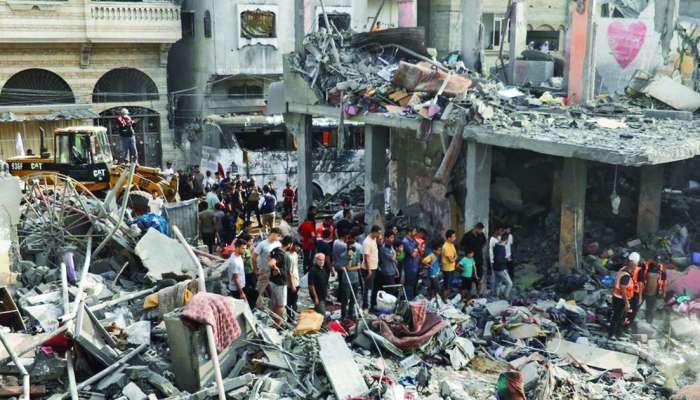
Muscat: The Israel-Hamas conflict has been a long-standing and deeply rooted issue, with both sides holding strong and often conflicting narratives.
In recent years, the role of media in shaping public opinion and influencing the conflict has become increasingly significant.
This article delves into how media coverage can either exacerbate tensions or foster understanding between Israel and Hamas.
1. The power of framing
Media outlets play a crucial role in shaping public perception by framing the conflict in a particular way. The choice of words, images, and headlines can significantly influence how people interpret events.
Often, media outlets are accused of favouring one side over the other, leading to biased reporting that further polarizes public opinion.
2. Sensationalism and emotional manipulation
The media’s inclination towards sensationalism and emotional manipulation can fuel the conflict. By focusing on the most dramatic and violent aspects of the conflict, news outlets can inadvertently amplify tensions and perpetuate a cycle of violence.
This approach tends to overshadow the underlying causes and complexities of the conflict, hindering efforts to find a peaceful resolution.
3. Selective reporting and omission
Media bias can manifest through selective reporting or omission of crucial information. By cherry-picking stories or events that align with a particular narrative, media outlets can distort the reality on the ground.
This selective reporting can lead to a skewed understanding of the conflict, reinforcing pre-existing biases and deepening divisions.
4. Social media and the rise of citizen journalism
The advent of social media has revolutionized the way information is disseminated, allowing for real-time updates and firsthand accounts from individuals on the ground.
However, this democratization of news also comes with challenges. Misinformation, fake news, and propaganda can spread rapidly, further polarizing public opinion and hindering efforts to find common ground.
5. Role of international media
International media outlets often play a significant role in shaping global perceptions of the Israel-Hamas conflict. Their coverage can influence international diplomacy, public opinion, and even foreign policy decisions.
However, international media coverage is not immune to biases, and the framing of the conflict can vary significantly depending on the outlet’s location and audience.
6. Opportunities for objective reporting and promoting understanding
Despite the challenges, media outlets have the potential to play a constructive role in promoting understanding and peace.
By providing balanced and objective reporting, journalists can help bridge the gap between conflicting narratives. In-depth analysis, contextualization, and human-interest stories can shed light on the complexities of the conflict, fostering empathy and encouraging dialogue.
Conclusion
The media’s role in the Israel-Hamas conflict is undeniably significant. While biased reporting, sensationalism, and selective coverage can exacerbate tensions, media outlets also have the power to promote understanding and facilitate peace. By striving for objectivity, providing comprehensive analysis, and highlighting shared humanity, the media can play a bigger role in the rapprochement process of the warring groups.
No one accused Israel for using the prohibited white phosphorus previously and now they are still using it. Imagine if it was Hamas using it, what would have happened!
An investigation by Haartez, the longest running newspaper in Israel, has brought to light discrepancies in the information provided by Israeli authorities on October 7. According to the investigation, the actual number of Israelis killed is reported to be 900, which is significantly lower than the previously stated figure of 2,000. Furthermore, the report suggests that approximately 50 percent of the casualties were Israeli soldiers and claims of 40 babies beheaded were utterly false.
It's also important to note that there is no concrete evidence to support claims that Hamas burned Israelis. However, a substantial portion of the deceased individuals displayed injuries consistent with tank shell impacts from Israeli forces. Notably, Israeli soldiers' bodies were reportedly treated with respect and taken to morgues, while the bodies of Hamas fighters were allegedly treated in a manner considered disrespectful.